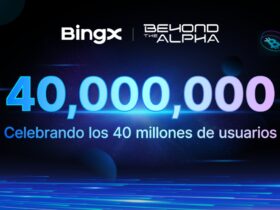Key facts:
Ethereum faces risk from US presidential election, says Bitwise
Despite all this, Ethereum is like the Microsoft of cryptocurrency networks, he says.
“It’s okay to hate Ethereum right now, but this could look like nonsense in the future,” says a recent report from digital asset manager Bitwise, written by its chief investment officer, Matt Hougan.
Hougan’s analysis sheds light on the reasons for ether’s stagnation (ETH), the ecosystem’s native cryptocurrency, which has performed weakly this year compared to its main competitors, the report says. report.
Until now, Ether has shown a marginal rise of 2% so far in 2024. As can be seen in the graph of TradingViewthe price of ETH has fluctuated between $2,100 and $4,000.

Besides, In the third quarter of this year, the cryptocurrency has fallen by more than 30%exceeding the 13.64% drop recorded in the same period in 2023.
In contrast, bitcoin (BTC) is up 38% and solana (SOL), Ethereum’s main competitor, is up 31% over the same period.
There are multiple reasons behind Ethereum’s stagnation
The first brake on Ethereum has to do with the impact of the US presidential election and regulationThe network could face significant risk due to the electoral process, scheduled for November 5.
Unlike bitcoin, which has largely weathered regulatory scrutiny, Ethereum remains under the scrutiny of the Securities and Exchange Commission (SEC). The agency considers staked ether to be a security, which represents “a threat” to its ecosystem, particularly decentralized finance (DeFi), where much of ETH’s value comes from.
Hougan warns that if Democratic candidate Kamala Harris wins and maintains the Biden administration’s critical stance toward cryptocurrencies, Ethereum could face even more regulatory hurdles. On the other hand, Republican candidate Donald Trump has expressed the importance of the United States leading the cryptocurrency industry.
Solana’s strong competition
Another element that has slowed down the growth of Ethereum is the growing competition from blockchains like Solanawhich “offer higher performance and lower costs.”
Solana has proven to be the main rival, but other new networks are also starting to occupy a significant space in the market.
“In crypto circles, it’s a great thing to be bullish on Solana and other new chains and bearish on Ethereum due to its older and more expensive technology.”
Matt Hougan, Chief Investment Officer.
Justin Bons, founder of Cyber Capital, stands out that Solana has a solid economic design, with a long-term inflation rate of 1.5% and a consumption rate of 50% of the base rate.
The growth of Layer 2 and the weak performance of ETFs
Additionally, Ethereum has focused its efforts on Layer 2 networks, such as Base, Arbitrum, and Optimism, which operate on top of the Ethereum mainnet. These are blockchains that work on top of another mainnet with the purpose of improving some aspects of it, such as efficiency, speed, and transaction costs.
While activity on these networks has grown rapidly, diverting much of the transaction volume away from the mainnet, Ethereum revenue has fallen to a four-year lowthe report notes. According to Hougan, this has raised questions about whether Ethereum has “shot itself in the foot” by shifting its focus away from its Layer 1.
In the following graph you can see: as Tier 1 revenues fell 99% since March 2024.

Goods too give your opinion on this and claims this “Layer 2 scaling roadmap” has always been the wrong technology path.
CriptoNoticias reported that the scalability of these networks has increased between 47% and 528% in the last six to twelve months. Among the main growing Layer 2 networks are Base, Mantle, Arbitrum One and OP Mainnet.
On the other hand, Ethereum spot ETFs have not had the overwhelming success of their bitcoin counterparts, despite having raised billions since their launch in July.
These financial instruments have been affected by the constant capital outflow of the Grayscale Ethereum Trust (ETHE), which so far stands at $2.7 billion, as indicated by the SosoValue chart.

The silver lining: Ethereum’s strengths
Despite these difficulties, Bitwise highlights that many of the concerns about Ethereum overlook its dominant position in several key areas.
For example, more than half of all stablecoins are issued on Ethereum, and More than 60% of DeFi assets are locked on its network.
An example of the network’s preference was when BlackRock decided to create a tokenized fund on Ethereum, which now manages more than $500 million in assets.
Likewise, Ethereum remains the programmable network with the most active developers and users. Regarding the number of researchers, has had a growth of 1,500% since 2019as seen below. It also has a market capitalization five times larger than its closest competitor.

The report compares Ethereum to Microsoft, arguing that while there are new innovative technologies, such as Google and Slack, Microsoft “is still bigger than all of them combined.”
Hougan concludes that while Ethereum faces challenges, none seem existential, and its opportunities remain abundant. It’s possible that the “market will re-evaluate Ethereum as the November election approaches” and the regulatory landscape becomes clearer. For now, it looks like “a potential contrarian bet through the end of the year,” he adds.






Leave a Reply